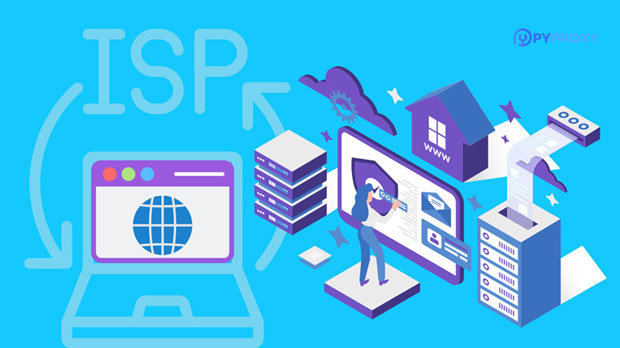What is Free Premium SOCKS5 Proxy? What are the differences from regular proxies?
A free advanced socks5 proxy is a type of network proxy service that offers users the ability to route their internet traffic through a secure and anonymous connection. This advanced proxy technology is known for its versatility and robust performance, enabling better privacy protection, faster speeds, and the ability to bypass restrictions or geo-blocked content. Unlike regular proxies, which often provide basic anonymity, a SOCKS5 proxy works at a lower network layer and offers enhanced security features, such as support for UDP (User Datagram Protocol) and more stable connections. In this article, we will explore the concept of free advanced socks5 proxies, their differences from regular proxies, and how they can benefit users in various scenarios. Understanding SOCKS5 ProxiesSOCKS5 stands for "Socket Secure" version 5, a network protocol that routes internet traffic through a proxy server. It operates at the transport layer (Layer 5) of the OSI model, which gives it the ability to handle various types of traffic, including HTTP, FTP, and even peer-to-peer communications like torrenting. Unlike traditional proxies that work by modifying the data at the application layer, SOCKS5 proxies forward the raw data packets without modifying them. This means they offer a higher degree of anonymity, as they don’t alter the contents of the data, which helps prevent leaks of sensitive information.The Key Features of Advanced SOCKS5 Proxies1. Enhanced Privacy and Security One of the main reasons users opt for advanced SOCKS5 proxies is their ability to provide robust security. SOCKS5 proxies offer a higher level of encryption compared to regular proxies, which helps protect the user’s data from hackers and surveillance. Additionally, SOCKS5 proxies can support more secure authentication methods, such as username and password authentication, making it more difficult for unauthorized parties to access the proxy server.2. No Data Modification As mentioned earlier, SOCKS5 proxies do not alter the data being transferred between the user and the destination server. This lack of data modification means that users can be more confident that their traffic is not being tampered with or logged in any way, which is particularly important for privacy-conscious individuals.3. Support for Multiple Protocols Advanced SOCKS5 proxies are versatile in that they support a wide variety of protocols, including HTTP, FTP, and even UDP (User Datagram Protocol), which is commonly used in applications like video streaming, VoIP, and online gaming. This allows users to bypass firewalls and access content that might otherwise be restricted by the network they are connected to.4. Faster Speeds and Stable Connections Compared to regular proxies, SOCKS5 proxies typically offer faster and more stable connections. This is because they do not modify data packets, reducing latency. Additionally, SOCKS5 proxies can manage multiple connections simultaneously, which is advantageous for users who require high-performance connections for activities like streaming, gaming, or file-sharing.How Do Regular Proxies Compare?Regular proxies, often referred to as HTTP or HTTPS proxies, are simpler and generally offer fewer features than advanced SOCKS5 proxies. They work by modifying the HTTP request and response data as it passes through the proxy server, which can result in slower speeds and increased latency. Regular proxies only handle web traffic (HTTP and HTTPS), meaning they are not as versatile as SOCKS5 proxies when it comes to handling different types of traffic, such as P2P connections or non-HTTP protocols.Additionally, regular proxies tend to offer fewer security features. They typically don’t support encryption or authentication methods beyond basic IP-based filtering, which can expose users to potential security risks. Since regular proxies only operate at the application layer (Layer 7 of the OSI model), they are more susceptible to traffic interception and manipulation.Advantages of Free Advanced SOCKS5 Proxies1. Cost-Free Option One of the main advantages of free advanced SOCKS5 proxies is that they do not require any financial investment. This makes them an attractive option for individuals or businesses that need proxy services for short-term use, or those who are experimenting with proxy technologies before committing to a paid solution.2. Anonymity and Privacy Free SOCKS5 proxies are popular among users seeking to remain anonymous online. Whether it’s for bypassing geo-restrictions, accessing censored content, or simply enhancing privacy, free SOCKS5 proxies can help users stay anonymous by masking their real IP address.3. Bypassing Geoblocks and Censorship Free advanced SOCKS5 proxies allow users to access content that may be restricted based on geographic location or network censorship. This is especially useful for individuals in countries with strict internet censorship, or for users who want to access streaming services that are only available in specific regions.4. Support for a Wide Range of Applications Since SOCKS5 proxies can handle various types of traffic (not just HTTP/HTTPS), they are highly beneficial for users engaged in activities like torrenting, gaming, or streaming. This ability to support multiple protocols means users can use free SOCKS5 proxies for a wide range of tasks without worrying about compatibility issues.Disadvantages of Free Advanced SOCKS5 ProxiesWhile free advanced SOCKS5 proxies offer many benefits, they also come with several limitations:1. Limited Speed and Reliability Free proxies, including SOCKS5 proxies, often have limitations when it comes to speed and reliability. Since free services typically don’t have the resources to maintain large server infrastructures, users may experience slower connection speeds, increased latency, or unstable connections, especially during peak usage times.2. Security Concerns Although SOCKS5 proxies are inherently secure, free proxy services may compromise security in other ways. For example, free proxies might log user data or inject advertisements into the user’s browsing experience. This could result in privacy violations or data leaks. It is essential to understand that free proxies may not provide the same level of protection as paid services.3. Potential for Overuse or Abuse Free SOCKS5 proxies are often used by many individuals at once, leading to congestion and reduced performance. Furthermore, because they are free, they may attract malicious users who exploit the service for activities like spamming or botnet operations, further degrading the experience for legitimate users.ConclusionIn conclusion, free advanced SOCKS5 proxies offer many advantages, such as improved privacy, faster speeds, and the ability to bypass geo-restrictions. However, they also come with notable drawbacks, including limited reliability, potential security risks, and performance issues. While SOCKS5 proxies stand out as more advanced compared to regular proxies, it’s important to weigh the pros and cons before relying on a free service for critical activities. For users seeking high levels of privacy, security, and performance, it may be worthwhile to consider premium SOCKS5 proxy services that offer dedicated support, faster speeds, and enhanced security features.
2025-01-07

























































